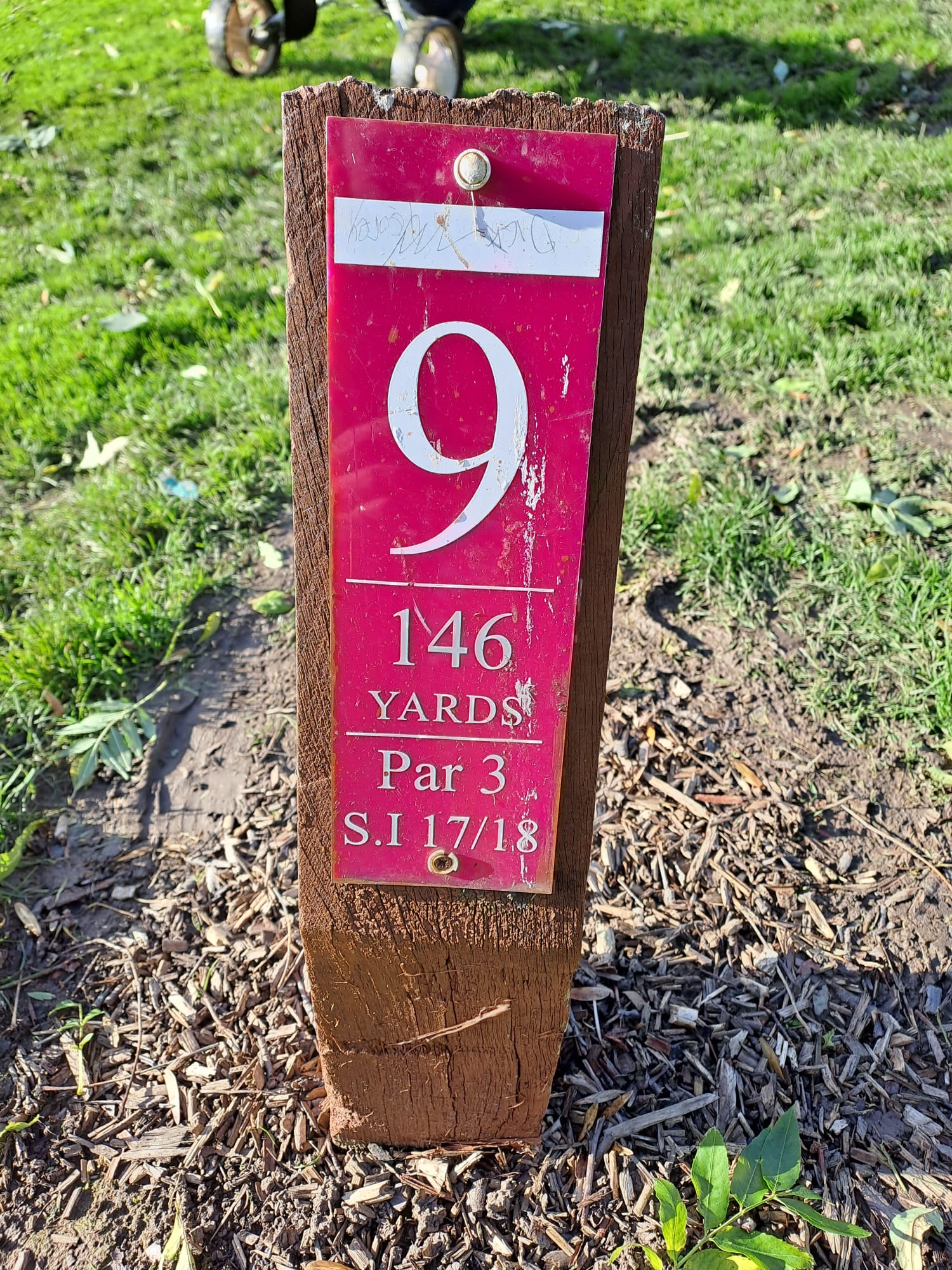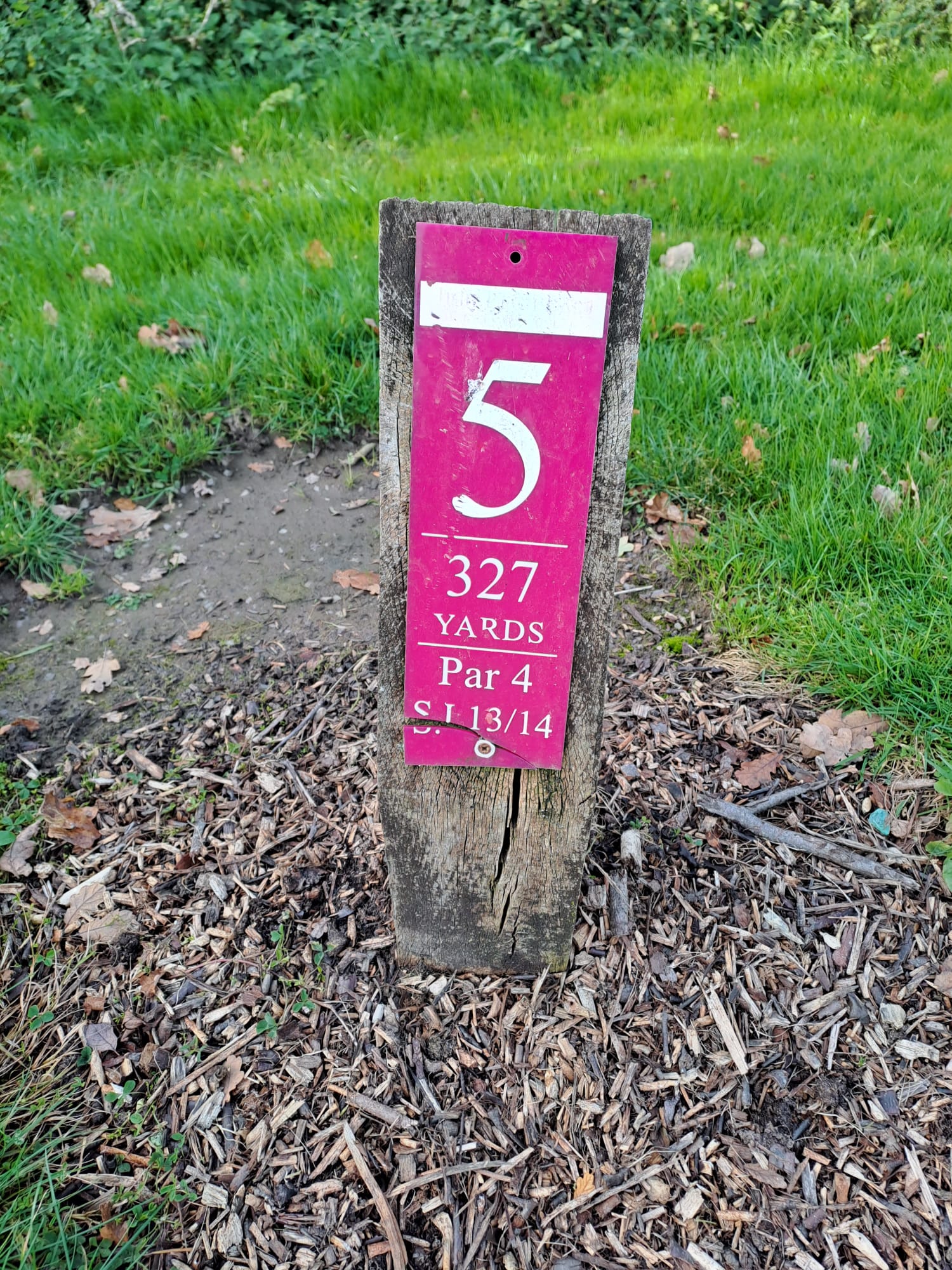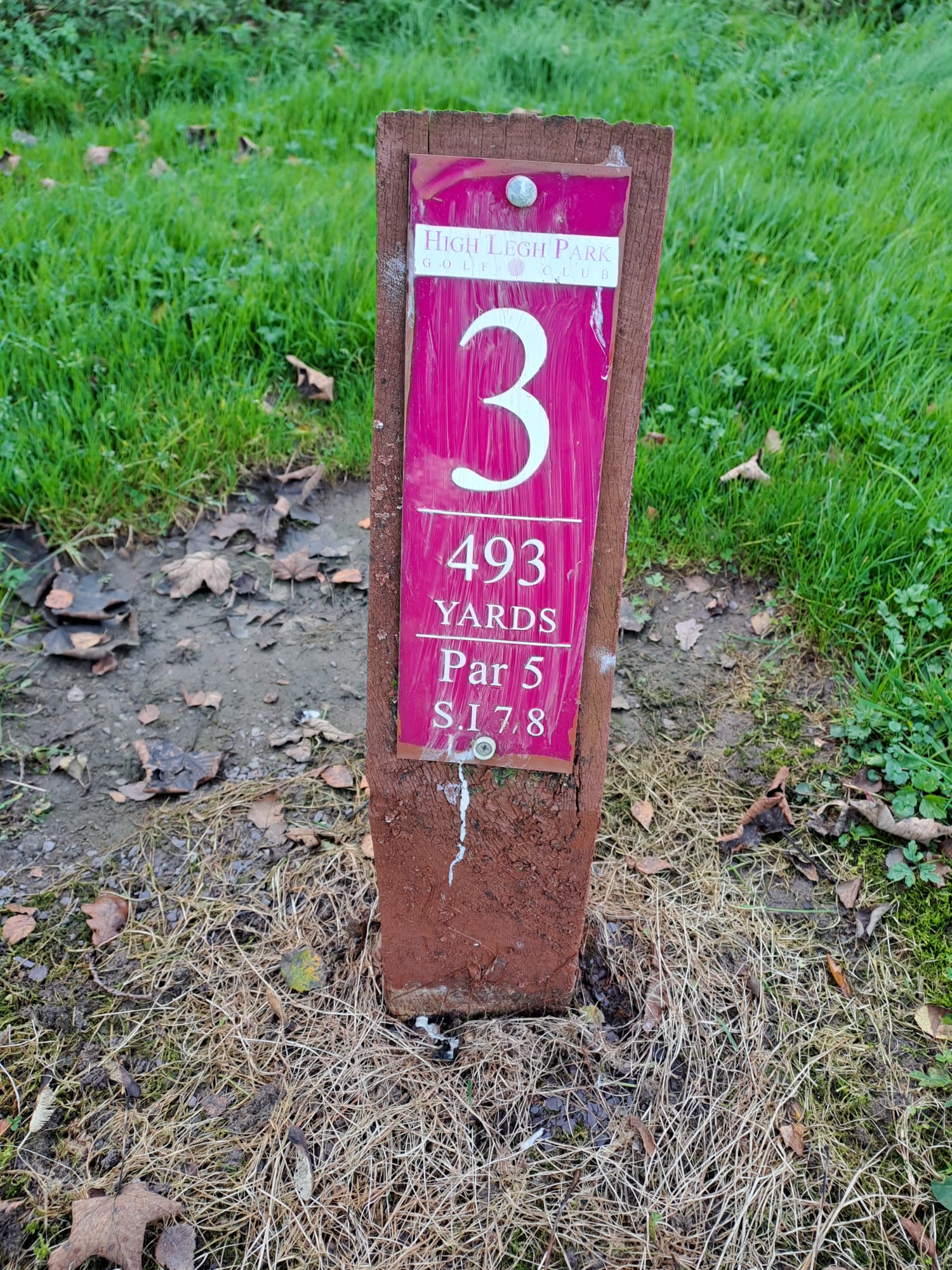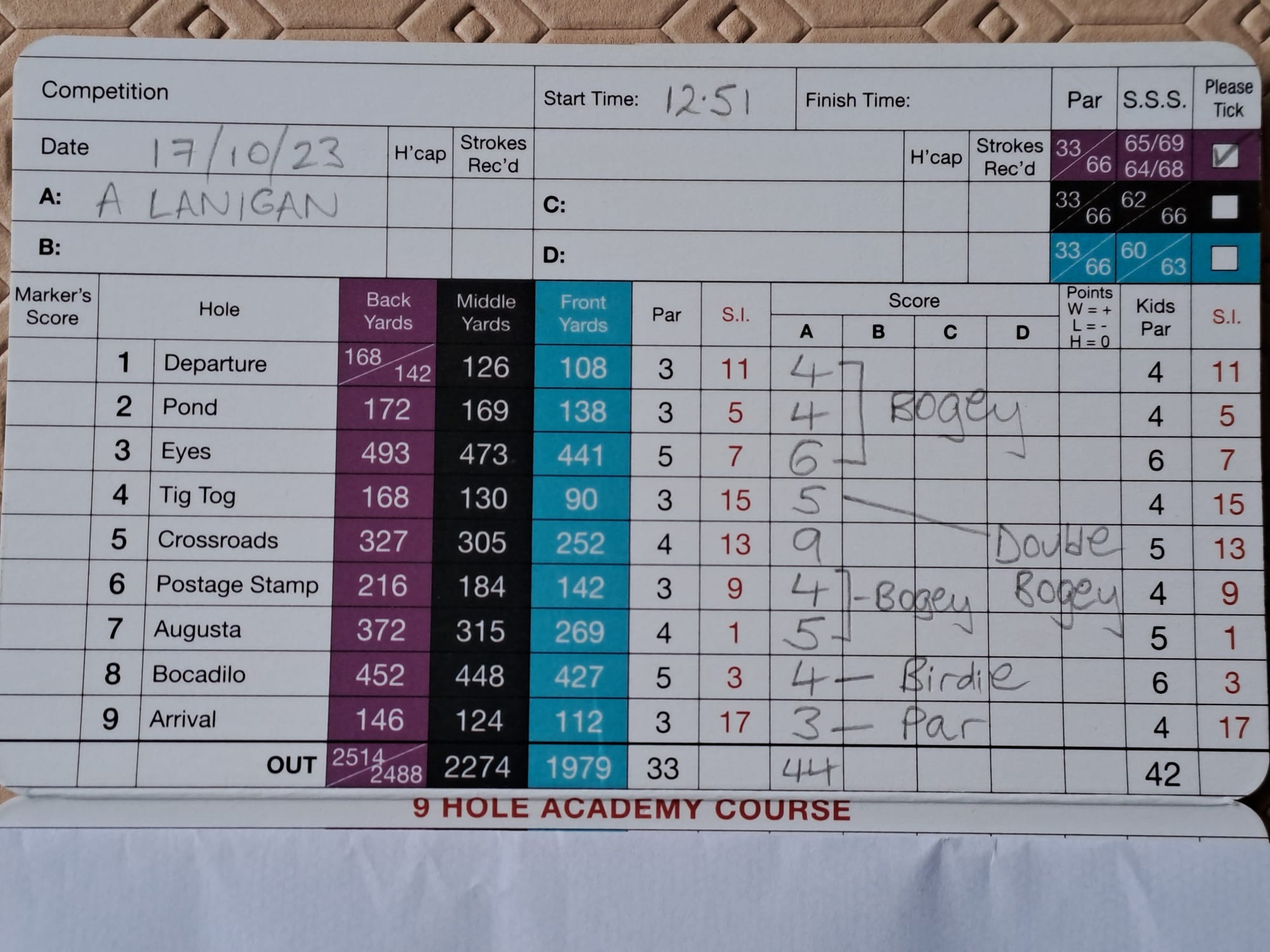Unsure about birdies and bogeys are? Can’t decipher a par from an albatross? Yes, golf does indeed have a weird and wonderful terminology all of its own. It can be very easy to feel daunted and overawed by so many words and phrases that we don’t understand that are related to golf.
Don’t worry, everyone is like that at first. All of us at AMERICAN GOLF were new to golf once and that’s why we will do our best to give all newcomers the best possible chance to embrace this amazing game.
Here we will look at the different words used for golf scoring, what they mean and how they came into use. Hopefully, by the end, we’ll all be feeling more confident and clued up when someone strikes up a conversation with us about how we’ve played!
Explaining Golf Scores
What is a par?
Par:
Par is the word we use for the score that we are supposed to take on a particular hole. The par score, if you like. On a par-three, that is three strokes. On a par-four, it is four strokes. And on a par-five, five strokes.
The word is derived from the stock exchange term ‘par’, where a stock would be above or below its normal ‘par’ figure. In golf in 1870, a writer called A.H. Doleman asked golf professionals David Strath and James Anderson what score would be good enough to win The Open Championship that year at Prestwick. They said that perfect play across Prestwick’s 12 holes would require 49 shots. Doleman would come to describe that as ‘par’ for the course.
In 1911, the United States Golf Association laid down their distances for determining the par of a particular hole. The length of a hole was the distance from the teeing ground to the putting green or surface.
Par 3: Distance up to 225 yards

Par 4: Distance from 226 yards to 425 yards

Par 5: Distance from 426 yards to 600 yards

Par 6: Distance from 601 yards
These distances are now the ones in place for women. But as golf balls and technology have improved immeasurably, pars have been altered for male golfers. Par-threes can stretch to up to 260 yards. Par-fours can be anything from 240 to 490 yards in length and par-five holes can vary between 450 and 710 yards. A par-six hole would be anything over 670 yards, but it is extremely uncommon to find a golf course with any par-six holes.
The par score for a golf course of 9 or 18 holes is reaching by adding up the par scores of each hole. For 18 holes, it is usually somewhere between 67 and 74. For 9 holes, it can vary from 32 to 37. Par is very important in golf because handicaps are worked out against the par score of a particular hole and a particular course. Generally speaking, if we are under par, ie under the par score, we have played well. If we are over par, or over the par score, we have not played well.

What is a Birdie
Birdie:
The term birdie is probably our favourite one in golf. Everyone wants a birdie! There may be an element of luck involved or a great deal of skill – or both, but lifting the ball out of the hole after getting one of these is a great feeling. Guaranteed!
A birdie is the word given to score one less than par, one-under par, on any given hole. That can be a two on a par-three, a three on a par-four or a four on a par-five.
The word is said to have originated in America in the early 20th century, where ‘bird’ was a slang term for something excellent. AB Smith was playing with his brother William P Smith, and their friend George A Crump at the Country Club in Atlantic City in 1903. Playing the par-four second hole, AB Smith’s second shot came within inches of the hole. One of his playing partners said, ‘That is a bird of a shot’. AB Smith then claimed that he should get double money if he won the hole with a score of one-under. He duly holed his putt and the trio came to describe what he had done as a ‘birdie’. The term became popular with the club’s membership before the phrase travelled around the world and went on to become part of every golfer’s vernacular.
What is an Eagle
Eagle:
Eagle is the word given to any score in golf that is two less than the par of the hole. That would be a hole-in-one on a par-three, a two on a par-four or a three on a par-five.
It was an extension from the term ‘birdie’ which is one-under par for any given hole. Of course, an eagle is the national symbol of America and is bigger and better than the average bird, hence how it was introduced into golf as a popular term.
If any of us are lucky enough to get an eagle in a round of golf, congratulations! However, if we achieve the craved for hole-in-one, it may cost us in the pocket! That’s because a golfing tradition is to buy a drink for our playing partners or anyone in the clubhouse when we finish playing and go and recount our tremendous deed!
What is an Albatross
Albatross:
Carrying on the bird theme, an albatross is the name given if we score three shots less than par, three-under par on a single hole. That means a hole-in-one on a par-four or taking just two shots on a par-five.
Those are very rare indeed, just like an albatross, which is a very rare bird. And it really would take something remarkable for us ever to be writing down the score equivalent to an albatross on our own scorecard!
In America, it is still common for golfers to use the term ‘double eagle’ for an albatross, but albatross is more of a UK term. But whether we want to call it an albatross or a double eagle, the chances are slim that we will ever have one in our golfing careers.
What is a Condor
Condor:
There is even a name for scoring four shots less than par on a single hole. That is called a condor. Although to achieve this, we would have to score a hole-in-one on a par-five! (It could also be done by getting a two on a par-six, but finding courses with a par-six hole is very, very rare).
Even the great Tiger Woods in his pomp never had a condor, underlining that this feat is nigh-on impossible, with a condor never scored in professional tournament golf. In fact, only seven condors have been recorded anywhere, so it’s maybe not a word that we will have to worry about sharing with our new golfing buddies anytime soon!
What is a Bogey
Bogey:
In golf, we have an ugly word for having a bad hole – a bogey! A bogey is the term giving to scoring one-over par on a hole. That can be a four on a par-three, five strokes on a par-four or six shots on a par-five. A bogey golfer is said to be a player who averages a bogey score on every hole, nine-over par for nine holes or 18-over par for 18 holes.
The term ‘bogey’ relates back to a game at Great Yarmouth Golf Club in 1890 involving a man called Charles Wellman. At that time, the expression ‘par’ was not used and instead players tried to achieve the ‘ground score’. Wellman exclaimed about trying to reach the ground score as the ‘Bogey Man’ in the popular song of ‘I’m the Bogey Man, catch me if you can!’ So for golfers, a hole’s ground score began to be known as ‘chasing the bogey man’. Soon an imaginary character was invented in an 1892 newspaper article – Colonel Bogey – as a golfer’s aim in a round was to beat Colonel Bogey!
Originally, a bogey had been a term for the number of shots that a good golfer should take on a particular hole. But as golf became more standardised, par scores were tightened and amateur golfers found themselves scoring over par, so bogey came to be recognised as a score of one-over par.
At that point, a bogey was the score that a good golfer should expect to take on a hole, while a par was the recognised score for an expert golfer. And for those of us starting out in golf, that is probably a good mantra to have. Naturally, we want to par every hole, but a bogey is never too bad.
What is a Double Bogey
Double Bogey:
A double bogey is the score of two more than the par of a hole. That means a five on a par-three hole, a six on a par-four hole or a seven on a par-five hole. Often it is reduced to the word, ‘double’. For example, if we say, ‘We’ve had a double’, golfers will understand that to mean a double bogey.
What is a Triple Bogey
Triple Bogey:
Now we are starting to enter territory that we don’t want to have to use too often! A triple bogey is the score of three more than the par of a hole. That means a six on a par-three hole, a seven on a par-four or an eight on a par-five. Again, it can be reduced to one word: ‘triple’. However, there is no hiding from what it is – a very bad hole!
If we start to plumb the depths of bad golf, we can even run up a quadruple bogey (four-over par), a quintuple bogey (five-over par) or a sextuple bogey (six-over par) and so forth on any particular hole. Obviously, it is useful to know how to describe these scores, but let’s hope for all sakes, that we don’t have to talk about them much when we are out on the course! For anything more than a triple bogey, rather than worry about the specific term, if we call it a ‘disaster hole’, other golfers will understand and won’t need to push us on just how many shots we took!
Handicap:
Now we know all the different terms involved in scoring, it is time to put them into context. In golf, a player’s status is defined by their handicap. It is a system that allows players to compete against one another, regardless of natural ability, in as fair a way as possible.
A handicap refers to the number of shots that a golfer needs to achieve the par score on a particular golf course. For example, Player A, with a handicap of five is expected to score five-over par for 18 holes. Player B, with a handicap of ten is expected to score ten-over par for 18 holes. To achieve the final score for a round, the player adds up the cumulative number of shots from each hole to get their total. Then the handicap is taken off that total to get the handicap score. Check out our other blog is you want to learn more on what a handicap is.